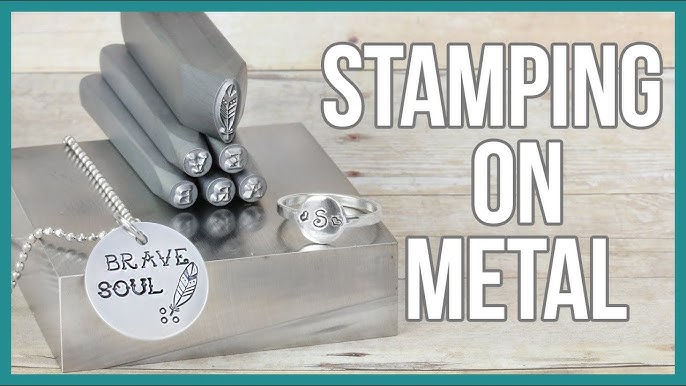Steel Stamping Technologies: Elevating Manufacturing Processes for Superior Results
In the world of manufacturing processes, steel stamping has long been a foundation method for creating an array of precision components. However, with the ruthless march of technical innovation, the landscape of metal stamping is undertaking a considerable makeover. Technologies in this field are not just enhancing the performance and high quality of manufacturing however are likewise paving the means for new possibilities that were formerly beyond reach. As the industry accepts these sophisticated developments, a redefinition of what is achievable in manufacturing is underway, appealing remarkable outcomes and setting new criteria for quality in the field.
Development of Steel Marking Techniques

Additionally, developments in material scientific research have led to the advancement of high-strength alloys that can currently be seamlessly marked into elaborate forms, dealing with a broader variety of commercial applications. The assimilation of robotics and man-made knowledge has actually better optimized the stamping process by boosting speed and accuracy while decreasing the threat of human mistake.

Influence of Advanced Materials
Have innovative products transformed steel marking procedures dramatically in the production market? By making use of materials such as high-strength alloys, progressed composites, and innovative coatings, metal stamping processes can currently generate elements that are lighter, more powerful, and a lot more long lasting than ever before.
These sophisticated materials supply exceptional mechanical residential properties, deterioration resistance, and thermal security, enabling makers to meet the demands of contemporary industries such as aerospace, auto, and electronics. Furthermore, making use of advanced materials in steel marking has helped with the manufacturing of complex geometries and detailed styles that were previously unattainable via typical approaches.
Moreover, the application of advanced products has actually caused minimized product waste, lower production costs, and shorter lead times, making metal stamping processes more economical and sustainable. As technology continues to advancement, the effect of sophisticated materials on metal stamping processes is expected to drive additional advancement and boost the competition of suppliers in the international market.
Automation in Steel Stamping
The development of metal stamping procedures driven by the assimilation of innovative products has actually set the phase for substantial developments in automation within the manufacturing industry. Automation in steel marking has actually changed production processes, boosting effectiveness, accuracy, and general outcome quality. Via the application of robotics, sensing units, and computer-controlled systems, tasks that were lengthy and once hand-operated can currently be carried out with exceptional speed and accuracy.
Automation in steel stamping not only increases manufacturing prices however also guarantees uniformity in the manufacturing process. By minimizing human intervention, the threat of mistakes is Check This Out considerably decreased, bring about higher degrees of item uniformity and integrity. Furthermore, automation enables makers to embark on complex stamping jobs that would be not practical or difficult to attain manually.
Furthermore, automation in metal marking contributes to a much safer working setting by lowering the need for workers to take part in dangerous or repetitive jobs - Metal Stamping. This shift towards automation not just enhances efficiency yet additionally paves the way for the future of manufacturing, where modern technology plays a main function in driving operational excellence
Quality Assurance and Examination Systems
With an emphasis on accuracy and dependability, quality assurance and evaluation systems play an essential role in making sure item quality in steel stamping processes. These systems are designed to keep track of every stage of production, from product evaluation to the final product, to ensure that all elements satisfy the needed requirements. By implementing advanced technologies such as optical inspection systems, coordinate measuring makers (CMM), and automated determining equipment, makers can identify also the tiniest variances in measurements, surface area high quality, and overall like it integrity of stamped parts.

Sustainability Practices in Metal Stamping
Building upon the foundation of precision and integrity developed via quality assurance and examination systems, the assimilation of lasting methods in metal stamping processes is increasingly ending up being a focal factor for makers seeking to minimize ecological impact and optimize resource utilization. Sustainability practices in steel marking include a variety of initiatives focused on minimizing waste generation, energy consumption, and greenhouse gas exhausts throughout the production process.
One key aspect of sustainability in steel marking is the adoption of green materials and modern technologies that advertise recyclability and waste reduction. By using recycled materials and applying energy-efficient machinery, producers can lower their carbon impact and add to a more sustainable production cycle. In addition, enhancing production procedures to reduce material waste and energy use not only profits the atmosphere but additionally results in set you back financial savings for services in the future.
In addition, the application of sustainable techniques in metal stamping can see page enhance brand credibility and allure to ecologically aware consumers. As sustainability proceeds to get importance in the production industry, integrating environment-friendly initiatives into steel stamping procedures is vital for long-term success and competition out there.
Conclusion
Finally, steel stamping methods have actually considerably progressed with time, incorporating sophisticated products and automation to improve producing procedures. Quality assurance and evaluation systems play an essential function in ensuring exceptional outcomes, while sustainability techniques are increasingly being carried out to lower environmental effect. These advancements in steel stamping have transformed the market, bring about more effective and sustainable manufacturing approaches for various markets.
Metal stamping, when a guidebook and labor-intensive procedure, has actually transformed right into a very automated and innovative technique of forming metal sheets into various forms and styles.Have sophisticated materials transformed steel marking procedures significantly in the manufacturing industry? By using materials such as high-strength alloys, advanced composites, and ingenious layers, metal marking procedures can currently create elements that are lighter, stronger, and much more durable than ever before.
The evolution of metal marking procedures driven by the combination of advanced materials has actually established the phase for substantial improvements in automation within the manufacturing industry.In verdict, steel marking methods have dramatically advanced over time, integrating advanced products and automation to enhance manufacturing procedures.